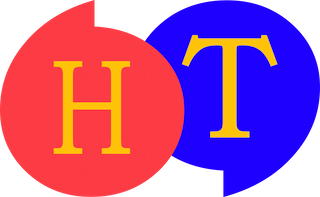“If computers continue to develop, wouldn’t human translation eventually become obsolete?” I’ve heard such comments from some friends of mine who don’t really know much about translation.
They were probably thinking about Google Translate. Such programs use large amounts of stored data to produce automated translations. Google is not the only company that has developed such programs, though. There are about five or six other companies I know that have done the same. It’s more accurate to refer to this as computer-assisted translation rather than simply Google Translate. The term ‘machine translation’ is becoming common nowadays, and I will use this term here as well.

When I heard comments like the one above in the past, I couldn’t come up with a good way to explain machine translation. Recently, however, I came across a good comparison that can help people understand the concept, which stated that machine translation is like a chainsaw. Before the chainsaw was invented, people had to rely on their own strength to cut wood. Now, cutting wood is much easier and quicker, and much more wood can be cut in the same amount of time. However, the chainsaw cannot cut wood on its own. In the end, it’s people who cut wood, and it is people who have to know when and how to use the chainsaw.

Those who do not understand the complexity of language often think that we can rely on computers for translation. Leading companies have invested billions of dollars into machine translation for several decades (about 30 years now). Still, machine translation has not replaced translators. Far from it. Actually, machine translation has become a useful tool for translators, and I think this will continue to be the case in the future. Let me take the chainsaw metaphor a little further. We cannot deny the handiness of the chainsaw. It is a very useful tool if we know how to use it, but can result in a disaster if we don’t. Just because a chainsaw is a useful and efficient tool for cutting objects, can a surgeon use it in his operating room? Luckily, no surgeon in his right mind would. Even if he tried to explain to his patient why he is using the chainsaw, the patient would jump off the table and bolt out of the operating room.

A person who chooses to have important contracts or newsletters translated through machine translation is no different from a crazy doctor who carries a chainsaw into the operating room. The chainsaw has its own distinct use, and so does the surgical knife.
This doesn’t mean that I don’t see value in machine translation. As I said before, the chainsaw clearly has value. Similarly, machine translation definitely has value for translators, as they are the ones who know very well how to use it. In brief, the translator must understand and actively use machine translation.
If you use machine translation for unsuitable projects, you will spend a lot of time trying to fix the text. I’ve listed some situations I feel are relatively suitable for CAT tool use.
• When the segments of the text are made up of words instead of sentences
• When the contents are more factual than persuasive, technical than literary
• For IT related projects
• For scientific content
However, even for the projects mentioned above, the translator will have to decide for his or herself whether using machine translation is beneficial or simply waste of time. The translator must first examine the source text. When there is uncertainty, it’s always better to first use the TM (translation memory) and run the program, and then to apply machine translation to the segments that haven’t been translated yet. Then, each segment must be checked and edited very carefully.
I have participated in projects that evaluate the algorithms of machine translation. My experience with these projects has led me to believe that slow progress of machine translation is unavoidable, especially because people working on these developments do not know all the languages. (In addition, these projects really made me feel the complexity of the Korean language. There are various postpositional elements that change depending on the consonant and vowel bases that do not exist in English or other European languages. Words with Chinese character roots, ambiguous subjects, honorific forms, and heavy reliance on context are also big hurdles for machine translation.)
Despite all these complexities, however, you can improve your productivity if you use machine translation correctly in the situations I’ve previously mentioned. A translator can use machine translation in the same way that a carpenter uses a chainsaw. The carpenter will use a chainsaw to cut out a rough shape before attending to the details. There is no need to use delicate cutting skills (a human translator’s true linguistic abilities) in this initial step.
Don’t give up on machine translation. Try to think of ways to use it to your advantage. As time passes, you’ll get the hang of how and when to use it to your benefit.








